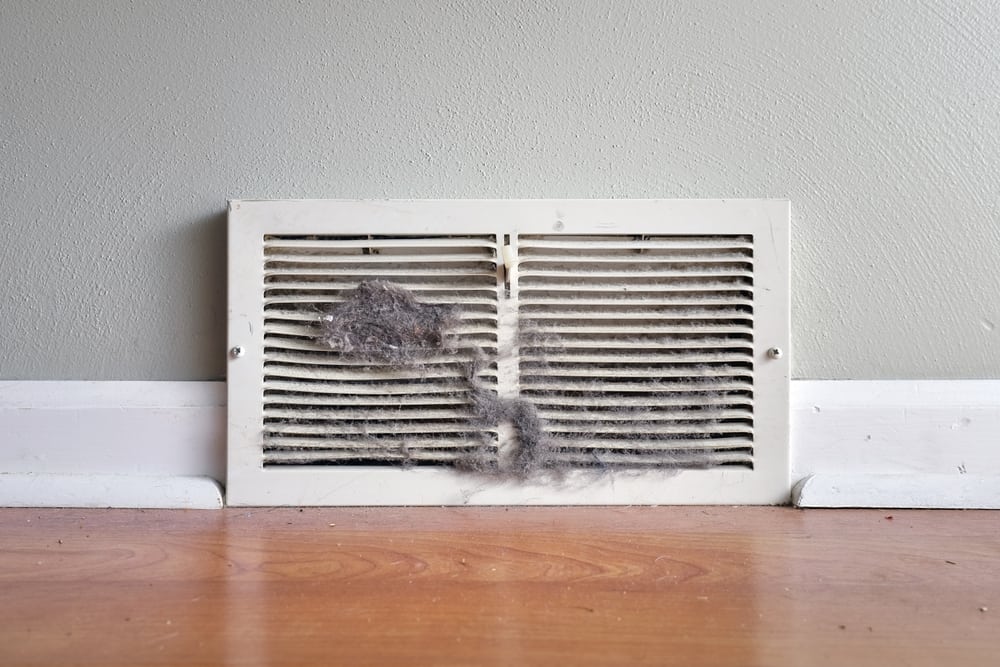Have you been experiencing persistent allergies in Austin, Texas? The culprit might be lurking in your own home. Dusty air ducts can significantly impact your indoor air quality and exacerbate allergies. In this article, we will explore the effects of dusty air ducts on allergies and discuss the importance of maintaining clean air ducts for a healthier living environment.
Indoor air quality plays a crucial role in our overall well-being. Unfortunately, many homeowners overlook the importance of clean air ducts when it comes to maintaining a healthy living space. Dusty air ducts can harbor a plethora of allergens, including dust mites, pollen, pet dander, and mold spores, which can trigger allergies and respiratory issues. Understanding the relationship between dusty air ducts and allergies is essential for improving your indoor air quality and reducing allergic reactions.
What Causes Dusty Air Ducts?
One of the primary causes of dusty air ducts is a lack of regular maintenance. Over time, dust, debris, and other contaminants accumulate in the ductwork, leading to a buildup of allergens. Additionally, external factors such as construction work, renovations, or nearby pollution sources can contribute to the accumulation of dust in your air ducts.
The Relationship Between Dusty Air Ducts and Allergies
Dust is a common allergen that affects a significant portion of the population. When dusty air ducts are present, the circulation system of your home can spread these allergens throughout the living space. As a result, individuals with allergies may experience heightened symptoms and increased sensitivity to airborne allergens. The continuous exposure to allergens present in dusty air ducts can lead to chronic allergies, respiratory discomfort, and even asthma attacks.
Symptoms of Allergies Caused by Dusty Air Ducts
If you suspect that dusty air ducts are triggering your allergies, it’s important to recognize the symptoms associated with this issue. Common symptoms include frequent sneezing, coughing, and congestion. Individuals may also experience itchy and watery eyes, along with skin rashes or irritation. If you notice these symptoms are more pronounced when spending time indoors, it is a clear indicator that dusty air ducts might be contributing to your allergies.
Preventing Dusty Air Ducts
Fortunately, there are measures you can take to prevent dusty air ducts and improve your indoor air quality. Regular air duct cleaning is crucial for removing accumulated dust and allergens from the system. It is recommended to have your air ducts professionally cleaned every three to five years. Additionally, remember to change your air filters regularly to ensure optimal air flow and reduce the amount of dust entering the ductwork. Proper ventilation and humidity control also play a vital role in minimizing the buildup of dust and mold in air ducts.
Professional Air Duct Cleaning Services
While some homeowners may attempt to clean their air ducts themselves, it is often best to hire professionals for this task. Professional air duct cleaning services utilize specialized equipment and techniques to ensure a thorough and effective cleaning process. By entrusting the task to experts, you can have peace of mind knowing that your air ducts are free from dust, allergens, and other contaminants.
Maintaining Indoor Air Quality
In addition to addressing dusty air ducts, maintaining overall indoor air quality is essential for allergy management. Keeping your living environment clean by regularly dusting surfaces, vacuuming with a HEPA filter, and minimizing clutter can help reduce the presence of allergens. Additionally, consider investing in air purifiers or dehumidifiers to further improve the air quality in your home. Proper ventilation and allowing fresh air to circulate can also make a significant difference in maintaining clean indoor air.
Conclusion
Dusty air ducts can have a profound impact on allergies and overall indoor air quality. By understanding the relationship between dusty air ducts and allergies, you can take proactive steps to ensure a healthier living environment. Regular air duct cleaning, changing air filters, and maintaining proper ventilation are key factors in reducing the presence of allergens in your home. Prioritizing clean air ducts will contribute to better respiratory health and alleviate allergy symptoms, allowing you to enjoy a more comfortable living space.

